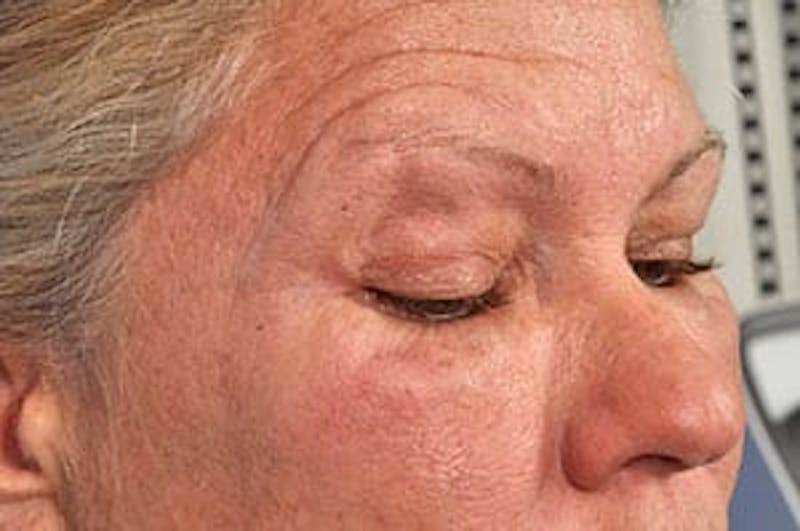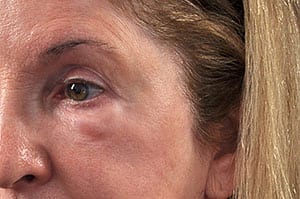
I see at least four patients a week, and consult with another few every week via the Internet who, for reasons mysterious to them, have developed “festoons”. These bags on bags, usually seen under the eyes in patients that either have thyroid eye problems, malnourishment, kidney problems, tumors or advanced aging issues, are occurring in younger and younger people, and in the absence of any of these issues.
We started seeing this phenomenon regularly about two years ago. I sent some patients for blood work, still others for advanced imaging, worried about these serious problems. But experience has been a great teacher: I’ve learned that the key question to ask these patients is whether they have had filler placed in their eyelids to correct eyelid bags, eyelid puffiness, or eyelid hollows at some point in the past. The answer which I hear uniformly now is, “yes, but, it was a few years ago”.
Well, that doesn’t matter. Even if it was a few years ago, the placement of high-density fillers in the eyelids can cause multiple issues, including festoons. With time, and as the filler reabsorbs, more swelling can occur, making a bad situation worse. The skin gets a bluish hue, the result of internal light reflection below the skin surface of the filler in the location where it was deposited up to 5 years ago. Even if it wasn’t like that to begin with, the filler can nonetheless cause late-onset swelling. And, nowadays, I’m seeing more and more patients that had the festoons from the day of their injections and have just been living with them, unsure of what to do.
In an effort to help their patients, dermatologists, surgeons, nurses, PA’s and other filler gurus across the country are injecting more, lighter fillers, around the hollows created by the festoons and bags. So, I’ll hear from a patient who can’t get in to see me, usually in another part of the country, who went to their doctor and had more filler placed-essentially making the situation worse. In some cases, a patient can press on her eyelid and leave a fingerprint because of swelling the filler creates under the skin. Many of these patients do end up in our office for correction.
I am amazed at how many people continue to go to their aesthetic provider with complaints about these problems, only to have the provider say that the patient should massage it out and that nothing more can be done. THAT’S JUST NOT TRUE!

I can honestly say these problems are remediable and are absolutely rare when the filler is injected in our office. Fortunately, in these cases, with all hyaluronic acid fillers, there is a remedy- hyaluronidase. An injection with hyaluronidase makes hyaluronic acid filler disappear almost immediately and makes it continue to dissipate over 24 hours. Other fillers may prove more difficult to remove.
Recently, I’ve seen patients where SO much filler has been put in (the last patient had she thinks, 12 syringes placed 2 at a time every eight months for 3 years) that a single dose of hyaluronidase didn’t do the trick, and they’ve needed to come in for a series of injections. What are injectors thinking?
When done properly, filler under the eyes is one of the most gratifying in-office procedures that we perform to improve the appearance of the eyes and to rejuvenate the face.
But, all these patients that have come into me, wounded from their previous bad experience with fillers, after having too much filler, or filler in the wrong location, or the wrong filler, just say they are so much more content having their old bags back, and not the new ones!
Once they’ve gotten used to their old look—without festoons and huge puffy areas of bloating, they sign up for surgery to have their aesthetic problems addressed with more permanent and natural solutions!
Whatever your situation, we at W Cosmetic Surgery can help. Check out some of our success stories!

